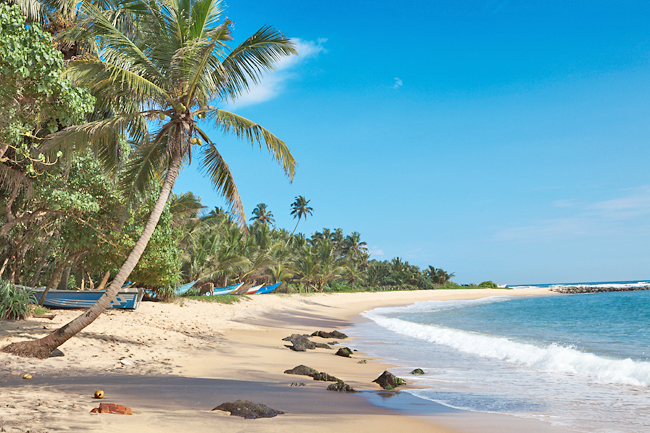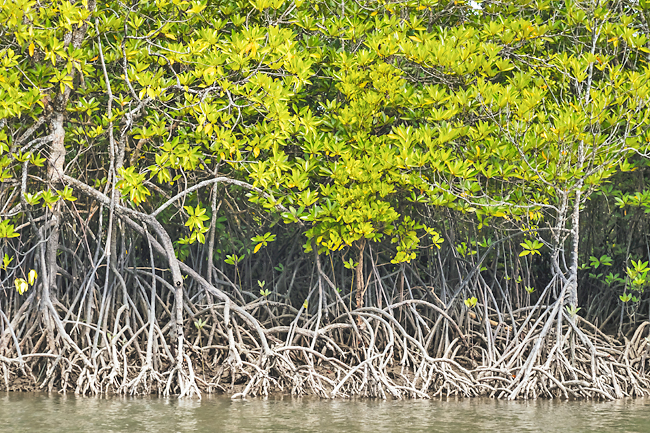Honouring biodiversity and addressing challenges on International Day of the Tropics
Spanning a significant portion of our planet’s surface, the Tropics harbour an astonishing diversity of life, boasting nearly 99 per cent of all mangrove species and covering 95 per cent of global mangrove forests.
Despite holding over half of the world’s renewable water resources, around 54 per cent, the region faces a paradox – nearly half of its inhabitants grapple with water stress.
While biodiversity flourishes in this equatorial belt, so does the alarming rate of biodiversity loss, outpacing global trends. These contrasting realities underscore the fragile balance between abundance and vulnerability in one of Earth’s most vital ecological zones.
Spanning the latitudinal belt between the Tropic of Cancer and the Tropic of Capricorn, the Tropics encompass a diverse range of landscapes shaped by varied topography and climates.

Characterised by consistently warm temperatures and minimal day-to-day temperature fluctuations, these regions experience abundant rainfall near the equator, with rainfall patterns becoming more seasonal farther from this central zone. Despite their natural richness, the Tropics confront significant challenges, including climate change, deforestation, urbanisation and shifting demographics. These factors underscore the complex interplay between human activity and the delicate tropical ecosystems.
A GUIDE FOR THE GEOGRAPHICALLY CURIOUS
For those less familiar with the geographic scope of the tropics, it’s centred around the Equator, where the sun’s rays align perpendicularly at least once annually – an intriguing geographical detail.
This expansive region, commonly associated with picturesque palm-lined islands, extends widely across the globe.
In the western hemisphere, tropical countries include Mexico, all of Central America, and the Caribbean islands south of Nassau. Across northern South America, it encompasses nations from Colombia to the upper sections of Chile, Argentina, Paraguay, and Brazil.
Across Africa, with the exception of Morocco, Tunisia, Lesotho, and Swaziland, every nation lies wholly or partly within the tropics.
Moving eastward, the Middle East claims Yemen entirely within this zone, with parts of Saudi Arabia, Oman, and the United Arab Emirates also included.
Southern Asia’s India predominantly falls within the tropics, while Southeast Asia and many Pacific islands, including Australia, Micronesia and Kiribati, likewise reside within this climatic belt.
While climates vary among tropical countries, they share common traits such as limited temperature ranges and distinctive wet and dry seasons, contributing to the cultivation of similar crops across comparable latitudes.
Yet, despite these similarities, each tropical region boasts its own unique culinary and agricultural diversity, reflecting a rich variety of flavours and cultures thriving within this expansive global zone.
EMBRACING THE PROMISE OF THE TROPICS
The inaugural State of the Tropics report, launched on June 29, 2014, marked a milestone in tropical research, a collaborative effort involving 12 prominent institutions dedicated to understanding this vital region.
This comprehensive report provides a distinctive lens into the increasingly significant challenges and opportunities within the tropics.
Recognising its impact, the United Nations General Assembly, in 2016, adopted resolution A/RES/70/267, designating June 29 as the International Day of the Tropics.
This annual observance serves to spotlight the unique issues confronting tropical areas globally, highlighting their profound global implications and emphasising the pivotal role these regions play in advancing sustainable development goals.

The International Day of the Tropics commemorates the rich biodiversity and distinctive challenges encountered by tropical nations. It serves as a platform to assess advancements, exchange tropical narratives and expertise, and recognise the region’s vast diversity and untapped potential.
Moreover, the nations of the Tropics have achieved notable strides, yet they confront a spectrum of challenges that necessitate targeted efforts across various developmental metrics to secure sustainable progress.
Looking ahead to 2050, these regions are poised to become home to the majority of the global population, including two-thirds of the world’s children. Despite these demographic shifts, poverty remains prevalent, leading to a higher incidence of undernourishment compared to global averages.
Urbanisation, a defining trend in the Tropics, presents its own set of challenges.
A greater proportion of the urban population here lives in precarious slum conditions, underscoring the urgent need for inclusive urban development strategies.
These dynamics highlight the critical imperative for focused attention and concerted action to steer tropical nations towards a sustainable future.
By safeguarding the tropics, we protect invaluable ecosystems, ensure sustainable development, and uphold the well-being of millions who call these regions home. Embracing this day reminds us of our shared responsibility to cherish and sustain these irreplaceable treasures for generations to come.





